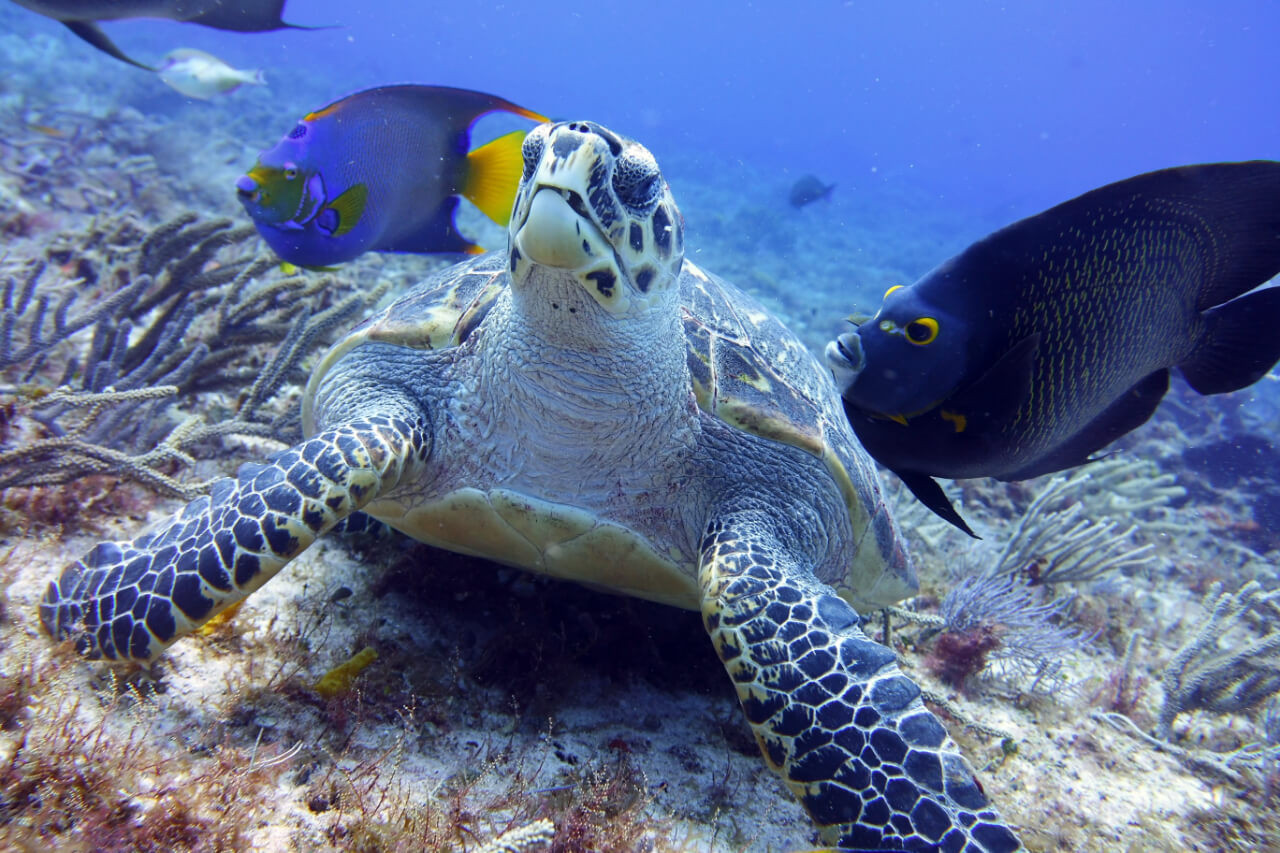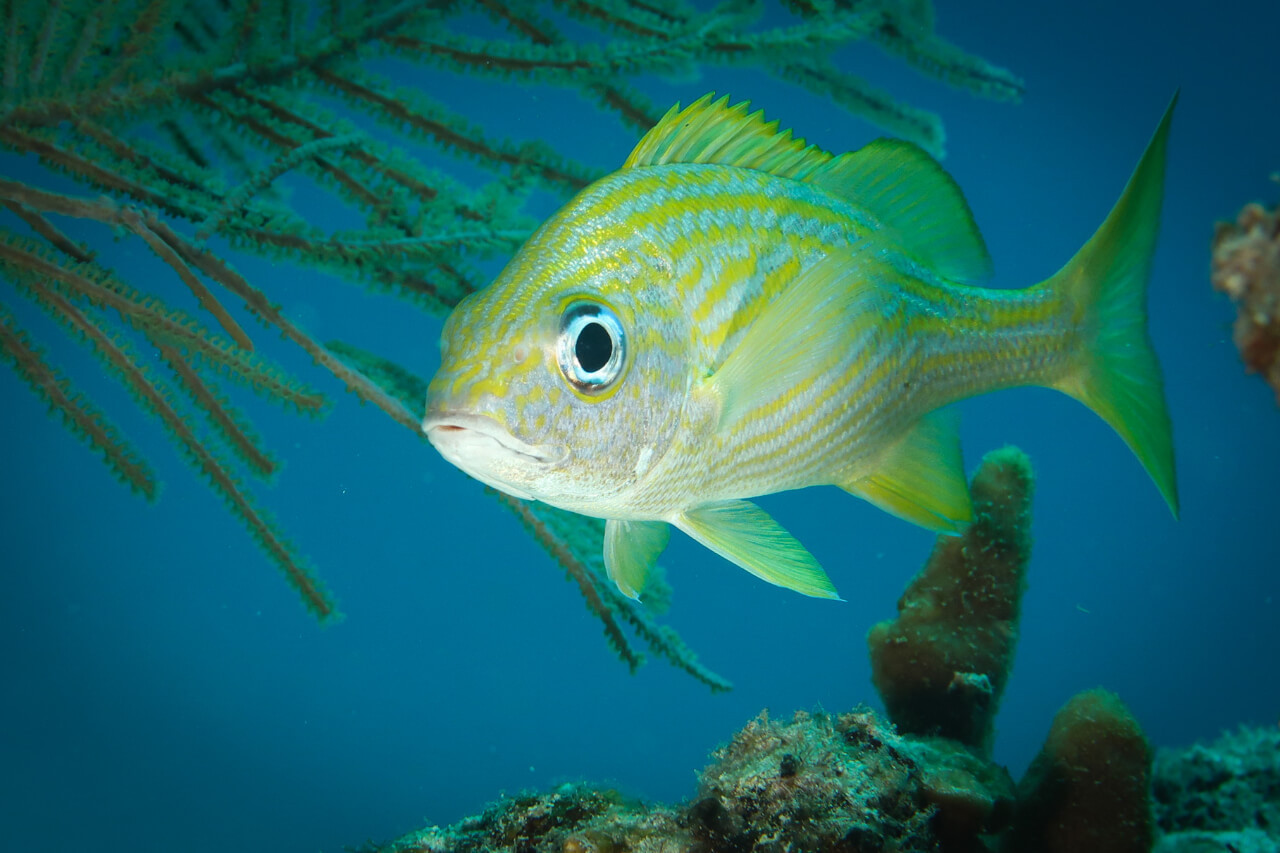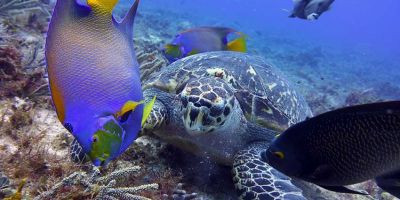Scuba diving and snorkeling are two popular activities that allow people to explore the underwater world, while both activities involve being in the water and breathing through a mouthpiece, they offer different levels of immersion and require different levels of training and equipment. Choosing between scuba diving and snorkeling depends on a variety of things, such as your comfort level in the water, your desired level of adventure, and the type of marine life you want to see.
We'll compare and contrast scuba diving and snorkeling, so you can decide which one is right for you!
1. Depth
One of the main differences between scuba diving and snorkeling is the depth at which you can explore, the depth difference is quite significant as snorkeling usually takes place on the surface of the water or at most a few feet below, allowing you to see what’s beneath you and enjoy the shallow waters. In most cases, snorkeling depths range up to 6 ft (1.8 m). While scuba diving, on the other hand, allows you to explore much deeper depths, sometimes even up to 100 ft (30 m) or more. This allows scuba divers to discover a whole new world that is inaccessible to snorkelers, while scuba diving you can experience the unique and awe-inspiring sight of deep reefs, shipwrecks, and marine life that are only found in the deeper waters

2. Equipment
Snorkeling and scuba diving require different types of equipment due to the depth and duration of the activity. Snorkeling requires minimal equipment, typically just a snorkel, mask, and fins. The mask helps you see underwater, the snorkels allow you to breathe while your face is in the water, and the fins are to help you swim more efficiently. However, scuba diving requires more equipment, including a wetsuit, weight belt, scuba tank, regulator, BCD (buoyancy control device), and other accessories. The wetsuit provides insulation and protects you from the cold, while the regulator allows you to breathe from the air tank. The BCD allows you to control your buoyancy, which is essential for safe and comfortable diving. In addition, scuba divers must also wear fins, carry a dive computer, and sometimes a dive knife or other tools. Scuba diving requires training and certification to ensure that you know how to properly use the equipment.
3. Time
The difference between these two activities is significant due to the difference in breathing methods. Snorkeling is typically a shorter activity than scuba diving, as you can only hold your breath for so long. Most people can comfortably snorkel for about 30 minutes before needing to take a break, this is usually sufficient to explore the shallow waters and observe the marine life. Scuba diving allows you to stay underwater for much longer periods of time, which gives you more time to explore, depending on the depth of the dive and the amount of air in your tank, dives can last anywhere from 30 minutes to several hours. This extra time allows you to explore deeper and more diverse underwater environments and observe marine life that you would not be able to see while snorkeling!
4. Experience
Snorkeling and scuba diving require different levels of experience. While snorkeling is generally easier and requires less training than diving, this is a simple activity that almost anyone can do under minimal instruction, as long as you’re comfortable in the water and can swim, you can enjoy some snorkel time! Although, it’s important to remember that snorkeling also requires some basic knowledge of water safety, such as being aware of the currents and avoiding dangerous marine life. Scuba diving on the other hand requires more training and experience to ensure safety and proper technique, divers must undergo courses to learn how to use the equipment properly, manage their breathing and handle any emergency that may present to them. Divers also need to know how to monitor their air supply, manage their buoyancy, and communicate with their dive partner or team. While scuba diving may seem more challenging and require more training, it’s also an opportunity to explore new adventures!
5. Marine Life
There are a few different species that you may encounter while snorkeling or scuba diving, it all depends on the depth of your dive. Snorkeling and scuba diving are both popular activities that allow us to explore the underwater world and observe marine life up close, while both activities offer unique opportunities there still are some key differences in the marine life you can observe while snorkeling vs. scuba diving.
When snorkeling, you are limited to the surface of the water and can only dive down a few feet. This means that you will primarily see marine life that lives near the surface of the water, such as groupers, barracuda, colorful corals, and seaweed. During the colder months, you can even spot a pod of dolphins! Snorkeling is a great way to observe colorful fish and other sea creatures in their natural habitat, but you may miss out on some of the more elusive and deeper-dwelling species.

In contrast, scuba diving allows you to explore deeper parts of the ocean and get up close with a wider variety of marine life. Scuba divers get to dive down to greater depths and spend more time underwater, which means they can observe animals that live in deeper waters, such as bull sharks in Playa del Carmen, various species of stingrays, nurse sharks, and other large predatory fishes.
Additionally, divers can explore wrecks and other underwater structures that are not visible from the surface, providing even more opportunities for unique and exciting encounters with marine life
6. Tours
Here in the Riviera Maya we have a diverse amount of tours we can take you on!
One of the most popular tours to do while snorkeling is the Whale Shark tour, on this adventure, we take you to the north of Cancún to witness the majestic whale shark, the largest fish in the sea, and one of our most popular residents! Reaching lengths of up to 40 ft (12m) and more, despite its size, it is a gentle giant. These fish arrive in mid-May and stay until late September, and are found swimming and feeding right on the surface day after day during this period. They are attracted by a huge supply of marine plankton that is forced to the surface by the meeting of two oceanic currents just north of Cancun. On this tour you’ll also have an 80% chance of seeing mantas and dolphins!

You can also snorkel over the outstanding underwater landscapes of the magical cenotes, these are natural sinkholes filled with crystal-clear freshwater. The cenotes were considered sacred by the ancient Maya, and are believed to have been used for both ceremonial and practical purposes. Today, they provide a unique and unforgettable experience for visitors to the area, snorkeling in these cenotes allows you to witness the stunning underwater rock formations, intricate stalactites and stalagmites, and a variety of freshwater fish and aquatic plants. The clarity of the water is remarkable, and the visibility is often so good that you can see straight to the bottom, which can be as deep as 100 feet (30 m) or more. It's a peaceful and serene environment that truly feels like a hidden paradise.
For our divers, we offer a wider range of adventures! Just as for our snorkeling friends, we can dive into the magical cenotes. If you're a certified diver, don't miss the chance to do these incredible dives too, these routes are clearly defined and you will always be within a couple of meters of the permanent guidelines. Diving in cenotes is strictly controlled, and you will be in a group of 4 divers maximum with one fully qualified cave diver. The unique lighting and visibility in the cenotes create an otherworldly atmosphere, making it feel like you're exploring a new planet. The cenotes can be quite deep, making it a popular spot for advanced divers, but there are also shallow areas for beginners to explore. It's an unforgettable diving experience that shouldn't be missed by any diving enthusiast visiting the area.

There's also the impressive C-56 Wreckin Puerto Morelos, this 84ft long Mexican Gun Boat purposefully sunk by the Mexican government, creating a new attraction for the divers of the Riviera Maya. We can usually find a large shoal of Big Eye Travellies hunting at the wreck, large Wrasse, Groupers, Morays, and, looking up, flights of Eagle Rays. Soft corals have made the wreck their home, as well as Arrow crabs and Fire worms, amongst other small crustaceans and invertebrates. And, up close to the Wheelhouse, watch out for the resident barracuda!
As we approach Playa del Carmen, we can come face to face with thebeautiful bull sharks! This is an adventure you can't miss, every year female bull sharks return to their breeding ground in the shallow waters front of the coast of Playa del Carmen in Mexico and allow us to dive into their natural habitat.
7. So, snorkeling or scuba diving?
In conclusion, whether you're an experienced diver or a first-time snorkeler, exploring the underwater world is an exciting experience that can offer a lifetime of memories. Both scuba diving and snorkeling offer unique opportunities to observe and appreciate the beauty and diversity of marine life. While scuba diving allows you to explore the depths and witness a greater variety of marine creatures, snorkeling offers a simpler, more accessible experience that can be enjoyed by almost anyone! Ultimately, the choice between scuba diving and snorkeling depends on your personal preferences, experience level, and the type of underwater adventure you're looking for.
Regardless of which one you choose, one thing is certain – both activities offer a chance to connect with the natural world and experience a sense of wonder and awe that cannot be found anywhere else. So, grab your fins and mask, and get ready to discover the beauty and mystery of the underwater world!



























